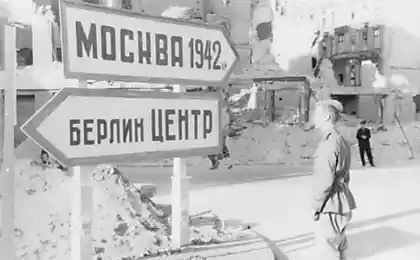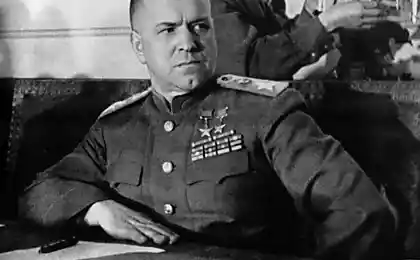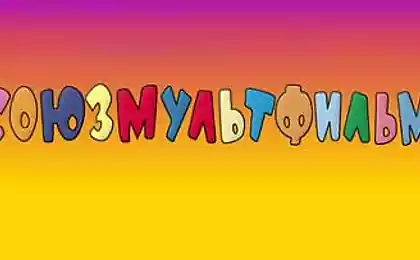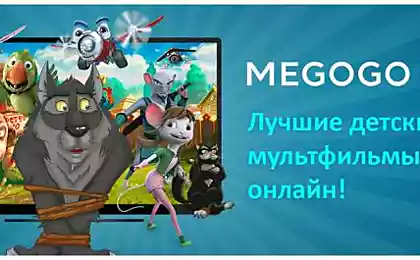232
Soviet educational cartoons
Popular science cartoons of Soviet animators are interesting both from an artistic and educational point of view. We have chosen those with whom you may not be familiar. The best examples of Soviet science pop: scripts by Sapgir and Zakhoder, filming by Kachanov and Norstein, music by Shainsky and Artemyev. In the frame - dinosaurs, Olympians, astronauts and Peruvian Indians.
"Chief Star"
Director Roman Davydov, 1966
The script of this film about the historical development of astronomy was written by Henrich Sapgir and Gennady Tsyferov. We learn about how man gradually comprehended the universe - from the primitive name of the luminaries to the conquest of space. Especially interesting is the episode where the characters go into the future: a rare example of fiction in the Soviet animation of the mid-1960s.
"Dinosaur Mountain"
Directed by Rasa Strautmane, 1967
The playwright and editor Arkady Snesarev, taking as a basis the hypothesis of French paleontologists about the causes of the extinction of dinosaurs, made a picture of an unprecedented genre - this is a children's cognitive parable-tragedy. The main message of the picture is not scientific, but moral and ethical: if you treat your duties formally, wait for disaster. The death of an unborn dinosaur, his dialogue with the shell of an egg, which prevents the baby from hatching because its task is to protect him and keep him warm, is one of the most dramatic scenes in the history of Soviet animation.
“Stories of an old sailor. Antarctica
Director Lev Milchin, 1972
“Antarctica” is the third part of “Stories of the Old Sailor”, a series of informative and adventure films by screenwriter Leonid Zavalnyuk and director Lev Milchin. The harsh living conditions in Antarctica, the life of polar explorers, the habits of penguins, the history of the continent – all this was told here long before the appearance of the Soviet-Japanese film “The Adventures of the Lolo Penguin”. The historical part was solved by the installation of static shots: Lev Milchin demonstrated a whole gallery of unique graphics he painted.
"Kola, Olya and Archimedes"
Director Yuri Prytkov, 1972
One of the most successful popular science films by Yuri Prytkov tells about the era of Archimedes and his scientific discoveries. The principle of operation of mechanisms based on Archimedean laws is well known, but the designs themselves have not survived to this day, and the director of the film “designed” them anew. It turned out very clearly and convincingly.
"Aurora."
Director Roman Kachanov, 1973
The main spring of the plot, invented by Arkady Tyurin and Roman Kachanov, was supposed to be this: children compare two legendary cruisers, the Varyag and Aurora, one of which is a song, and the other is not. But censorship found such a comparison inappropriate, so that only Aurora remained in the film, and the plot became somewhat schematic. Nevertheless, an important idea has been preserved: even the driest and template information from the textbook hides a rich, rich and not so simple story - you just need to show a sincere interest in it. The film completes the composition of Vladimir Shainsky “Cruiser Aurora”, which instantly became a classic of children’s song repertoire.
"Ratibor's Childhood"
Director Roman Davydov, 1973
The screen adaptation of Valentin Ivanov’s novel “Primordial Rus” shows children the life and way of life of the Eastern Slavs of the VI century. The film artist Viktor Nikitin had a difficult task: to recreate the world, the information about which is rather sketchy, and he coped with it wonderfully, although some of his pictorial finds are not quite historically reliable. Monumental epicity in the guise of the main characters, subtle coloristic skill in the decoration part, bright battle scenes - all this makes the film an outstanding work of drawn cinema. PP
The Mirror of Time.
Director Vladimir Tarasov, 1976
In the early 1970s, actor, screenwriter and director Vasily Livanov and design pilot Anatoly Korobkov (in the credits - A. Ankor) conceived to develop a new genre for Soviet animation - a film hypothesis. The first picture from the series “The Great Secrets of the Universe” was shot by Livanov himself – it was the film “Phaethon – the Son of the Sun”, telling about the existence of the hypothetical planet Phaethon and the possible causes of its death. “The Mirror of Time”, which discusses the possibility of visual “time travel”, was already shot by Vladimir Tarasov, a director prone to surrealist techniques. In the film, which is very rich in various quotations and allusions, there are also inserted episodes that refer to the works of Mark Twain and Herbert Wells.
"Who are the birds?"
Directed by Julian Kalisher, 1978
The film is based on the informative fairy tale of Boris Zakhoder “Once upon a time Phip”, in which the chick learns what exactly determines his belonging to the class of birds. Julian Kalisher and book schedule Valery Dmitriuk put the action in the conventional world of color planes and extremely simplify the design of the protagonist: Phip is a ball with wings on two sticks-legs. With this simple design, animators create real animation miracles. A wonderful group of voice actors led by Clara Rumyanova worked on the film, the music was written by Alexander Zhurbin. It was an exciting and witty spectacle.
Legends of the Peruvian Indians
Directed by Vladimir Pekar, 1978
This is a joint work of director Vladimir Pekar, who was interested in the paintings of the disappeared Mochik Indian tribe, anthropologist Yuri Berezkin, who reconstructed their mythology with an emphasis on the important theme of the struggle for peace for the late 1970s, and artist Tatiana Kolyusheva, who picked up a peculiar ornamental style for this material. Composer Eduard Artemyev proved to be a great stylist. After the success of The Legend of the Peruvian Indians, the same group will master Indian, Mongolian, Korean, African, ancient Egyptian material, increasingly preferring free fantasies on the theme of a particular culture to scrupulous reconstruction of the myth.
The Olympics.
Director Fedor Hitruk, 1982
The main advantage of “Olympionics” is the ironic intonation, sustained by animators and Zinovy Gerdt, reading the voiceover text. In the painted plots telling about the achievements of athletes of Ancient Greece, the artists styled the image under antique vase paintings and frescoes and used photographs of samples of ancient sculpture. So, Yuri Norshtein shot the editing episode using shots of bas-reliefs of the Pergamon altar.
Cycle "Stories about professions"
Director Boris Akulinichev, 1985–1987
"Lords of Lightning"
"Stone Musicians"
"Helpmen of Hephaestus"
"Milk Neptune"
This series of four films is devoted to the history of various industries and agriculture. The first film - "Lords of Lightning" - tells about electricity, the laws of thermodynamics, modern energy; "Stone Musicians" - about the history of architecture and construction; "Helpers of Hephaestus" - about metallurgy; "Dairy Neptune" - about the production of dairy products. And all this with the intonation of “Merry lessons of the babysitter”, caricature through heroes, stylization under engraving or lubok in “historic” digressions and poster descriptions of the power of technology. published
Author: Georgy Borodin
What to watch tonight: 16 2016 movies you'll love 7 Easy British Movies That Will Make Winter Nights Warmer
Source: arzamas.academy/materials/1221
"Chief Star"
Director Roman Davydov, 1966
The script of this film about the historical development of astronomy was written by Henrich Sapgir and Gennady Tsyferov. We learn about how man gradually comprehended the universe - from the primitive name of the luminaries to the conquest of space. Especially interesting is the episode where the characters go into the future: a rare example of fiction in the Soviet animation of the mid-1960s.
"Dinosaur Mountain"
Directed by Rasa Strautmane, 1967
The playwright and editor Arkady Snesarev, taking as a basis the hypothesis of French paleontologists about the causes of the extinction of dinosaurs, made a picture of an unprecedented genre - this is a children's cognitive parable-tragedy. The main message of the picture is not scientific, but moral and ethical: if you treat your duties formally, wait for disaster. The death of an unborn dinosaur, his dialogue with the shell of an egg, which prevents the baby from hatching because its task is to protect him and keep him warm, is one of the most dramatic scenes in the history of Soviet animation.
“Stories of an old sailor. Antarctica
Director Lev Milchin, 1972
“Antarctica” is the third part of “Stories of the Old Sailor”, a series of informative and adventure films by screenwriter Leonid Zavalnyuk and director Lev Milchin. The harsh living conditions in Antarctica, the life of polar explorers, the habits of penguins, the history of the continent – all this was told here long before the appearance of the Soviet-Japanese film “The Adventures of the Lolo Penguin”. The historical part was solved by the installation of static shots: Lev Milchin demonstrated a whole gallery of unique graphics he painted.
"Kola, Olya and Archimedes"
Director Yuri Prytkov, 1972
One of the most successful popular science films by Yuri Prytkov tells about the era of Archimedes and his scientific discoveries. The principle of operation of mechanisms based on Archimedean laws is well known, but the designs themselves have not survived to this day, and the director of the film “designed” them anew. It turned out very clearly and convincingly.
"Aurora."
Director Roman Kachanov, 1973
The main spring of the plot, invented by Arkady Tyurin and Roman Kachanov, was supposed to be this: children compare two legendary cruisers, the Varyag and Aurora, one of which is a song, and the other is not. But censorship found such a comparison inappropriate, so that only Aurora remained in the film, and the plot became somewhat schematic. Nevertheless, an important idea has been preserved: even the driest and template information from the textbook hides a rich, rich and not so simple story - you just need to show a sincere interest in it. The film completes the composition of Vladimir Shainsky “Cruiser Aurora”, which instantly became a classic of children’s song repertoire.
"Ratibor's Childhood"
Director Roman Davydov, 1973
The screen adaptation of Valentin Ivanov’s novel “Primordial Rus” shows children the life and way of life of the Eastern Slavs of the VI century. The film artist Viktor Nikitin had a difficult task: to recreate the world, the information about which is rather sketchy, and he coped with it wonderfully, although some of his pictorial finds are not quite historically reliable. Monumental epicity in the guise of the main characters, subtle coloristic skill in the decoration part, bright battle scenes - all this makes the film an outstanding work of drawn cinema. PP
The Mirror of Time.
Director Vladimir Tarasov, 1976
In the early 1970s, actor, screenwriter and director Vasily Livanov and design pilot Anatoly Korobkov (in the credits - A. Ankor) conceived to develop a new genre for Soviet animation - a film hypothesis. The first picture from the series “The Great Secrets of the Universe” was shot by Livanov himself – it was the film “Phaethon – the Son of the Sun”, telling about the existence of the hypothetical planet Phaethon and the possible causes of its death. “The Mirror of Time”, which discusses the possibility of visual “time travel”, was already shot by Vladimir Tarasov, a director prone to surrealist techniques. In the film, which is very rich in various quotations and allusions, there are also inserted episodes that refer to the works of Mark Twain and Herbert Wells.
"Who are the birds?"
Directed by Julian Kalisher, 1978
The film is based on the informative fairy tale of Boris Zakhoder “Once upon a time Phip”, in which the chick learns what exactly determines his belonging to the class of birds. Julian Kalisher and book schedule Valery Dmitriuk put the action in the conventional world of color planes and extremely simplify the design of the protagonist: Phip is a ball with wings on two sticks-legs. With this simple design, animators create real animation miracles. A wonderful group of voice actors led by Clara Rumyanova worked on the film, the music was written by Alexander Zhurbin. It was an exciting and witty spectacle.
Legends of the Peruvian Indians
Directed by Vladimir Pekar, 1978
This is a joint work of director Vladimir Pekar, who was interested in the paintings of the disappeared Mochik Indian tribe, anthropologist Yuri Berezkin, who reconstructed their mythology with an emphasis on the important theme of the struggle for peace for the late 1970s, and artist Tatiana Kolyusheva, who picked up a peculiar ornamental style for this material. Composer Eduard Artemyev proved to be a great stylist. After the success of The Legend of the Peruvian Indians, the same group will master Indian, Mongolian, Korean, African, ancient Egyptian material, increasingly preferring free fantasies on the theme of a particular culture to scrupulous reconstruction of the myth.
The Olympics.
Director Fedor Hitruk, 1982
The main advantage of “Olympionics” is the ironic intonation, sustained by animators and Zinovy Gerdt, reading the voiceover text. In the painted plots telling about the achievements of athletes of Ancient Greece, the artists styled the image under antique vase paintings and frescoes and used photographs of samples of ancient sculpture. So, Yuri Norshtein shot the editing episode using shots of bas-reliefs of the Pergamon altar.
Cycle "Stories about professions"
Director Boris Akulinichev, 1985–1987
"Lords of Lightning"
"Stone Musicians"
"Helpmen of Hephaestus"
"Milk Neptune"
This series of four films is devoted to the history of various industries and agriculture. The first film - "Lords of Lightning" - tells about electricity, the laws of thermodynamics, modern energy; "Stone Musicians" - about the history of architecture and construction; "Helpers of Hephaestus" - about metallurgy; "Dairy Neptune" - about the production of dairy products. And all this with the intonation of “Merry lessons of the babysitter”, caricature through heroes, stylization under engraving or lubok in “historic” digressions and poster descriptions of the power of technology. published
Author: Georgy Borodin
What to watch tonight: 16 2016 movies you'll love 7 Easy British Movies That Will Make Winter Nights Warmer
Source: arzamas.academy/materials/1221





















